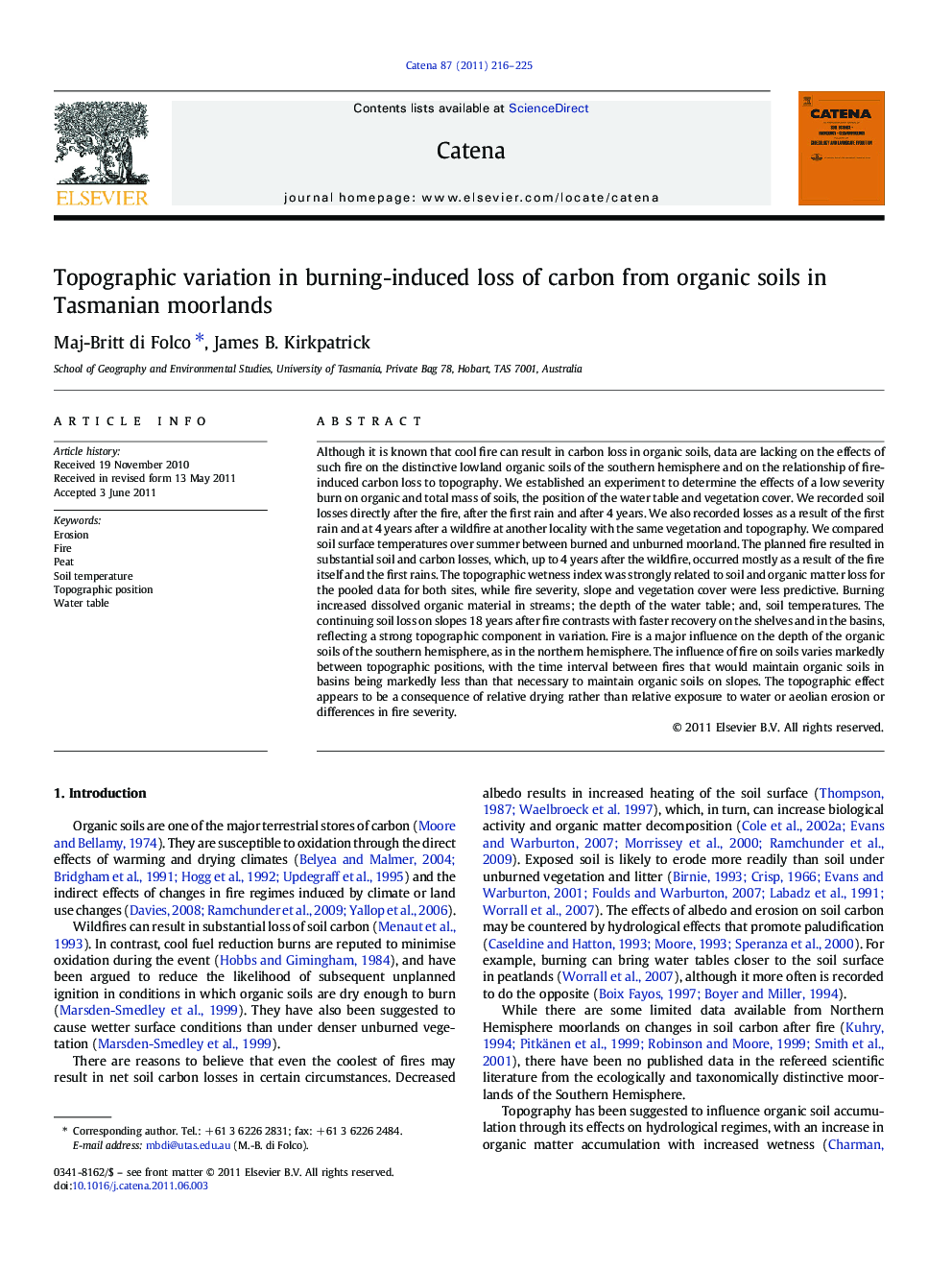| کد مقاله | کد نشریه | سال انتشار | مقاله انگلیسی | نسخه تمام متن |
|---|---|---|---|---|
| 4571927 | 1332136 | 2011 | 10 صفحه PDF | دانلود رایگان |

Although it is known that cool fire can result in carbon loss in organic soils, data are lacking on the effects of such fire on the distinctive lowland organic soils of the southern hemisphere and on the relationship of fire-induced carbon loss to topography. We established an experiment to determine the effects of a low severity burn on organic and total mass of soils, the position of the water table and vegetation cover. We recorded soil losses directly after the fire, after the first rain and after 4 years. We also recorded losses as a result of the first rain and at 4 years after a wildfire at another locality with the same vegetation and topography. We compared soil surface temperatures over summer between burned and unburned moorland. The planned fire resulted in substantial soil and carbon losses, which, up to 4 years after the wildfire, occurred mostly as a result of the fire itself and the first rains. The topographic wetness index was strongly related to soil and organic matter loss for the pooled data for both sites, while fire severity, slope and vegetation cover were less predictive. Burning increased dissolved organic material in streams; the depth of the water table; and, soil temperatures. The continuing soil loss on slopes 18 years after fire contrasts with faster recovery on the shelves and in the basins, reflecting a strong topographic component in variation. Fire is a major influence on the depth of the organic soils of the southern hemisphere, as in the northern hemisphere. The influence of fire on soils varies markedly between topographic positions, with the time interval between fires that would maintain organic soils in basins being markedly less than that necessary to maintain organic soils on slopes. The topographic effect appears to be a consequence of relative drying rather than relative exposure to water or aeolian erosion or differences in fire severity.
► Planned fire resulted in substantial soil and carbon losses.
► Topographic wetness index was strongly related to soil and organic matter loss.
► Burning increased dissolved organic material in streams.
► Soil loss on slopes after fire greater than on shelves and basins.
► The influence of fire on soils varies markedly between topographic positions.
► Topographic effect a result of relative drying related to topography.
Journal: CATENA - Volume 87, Issue 2, November 2011, Pages 216–225